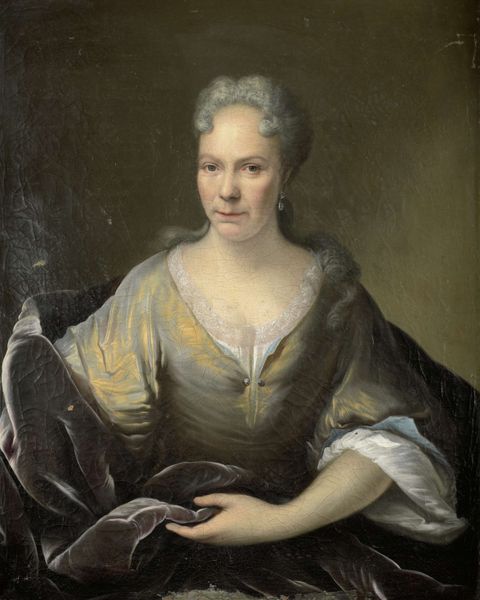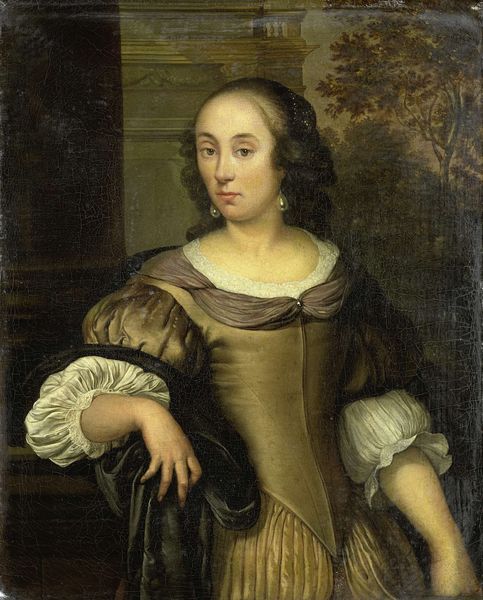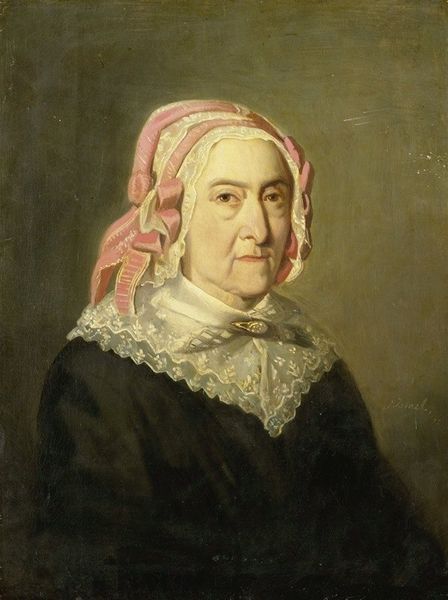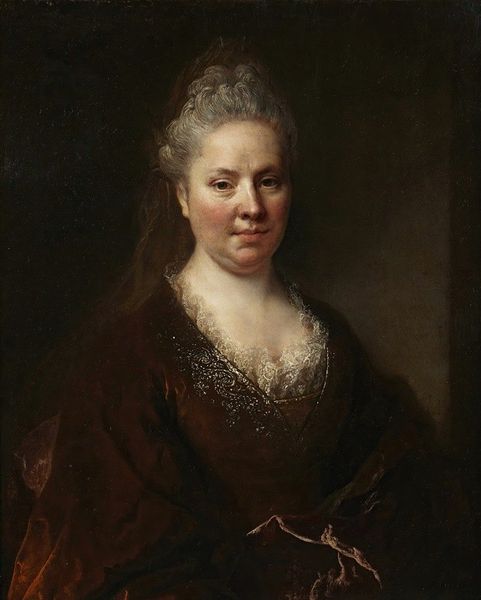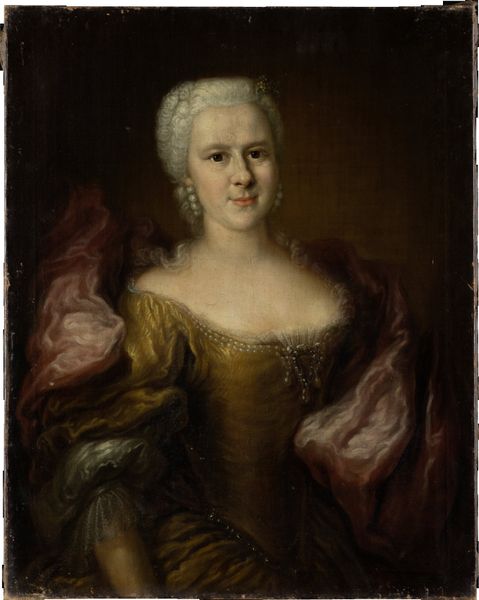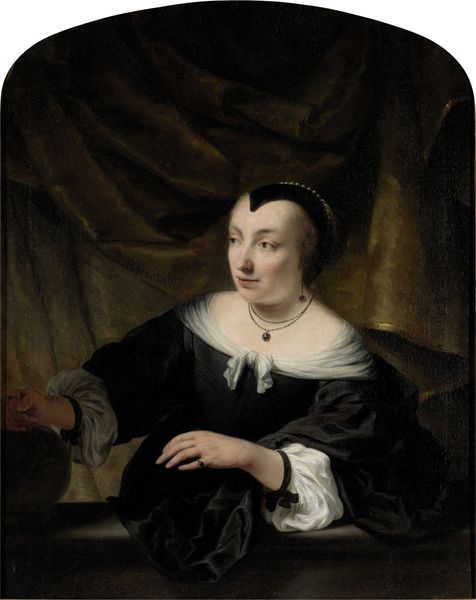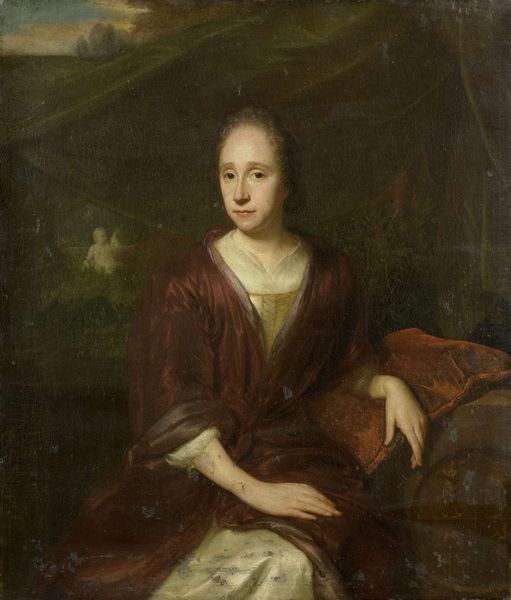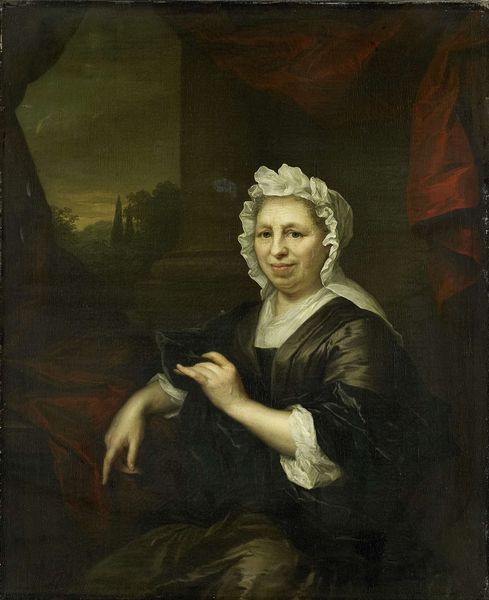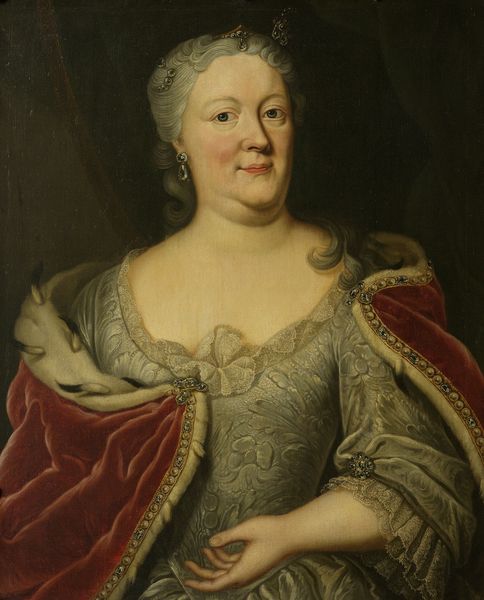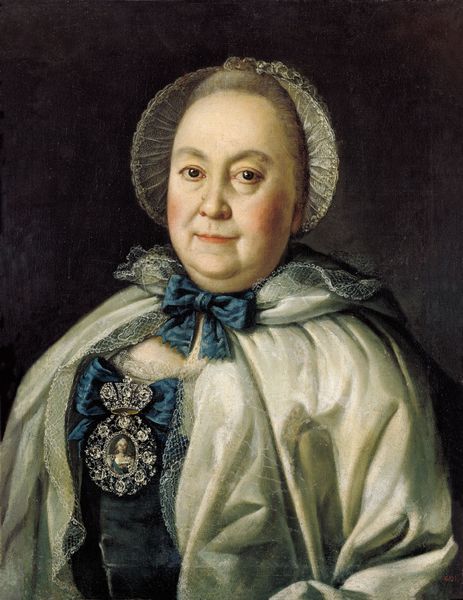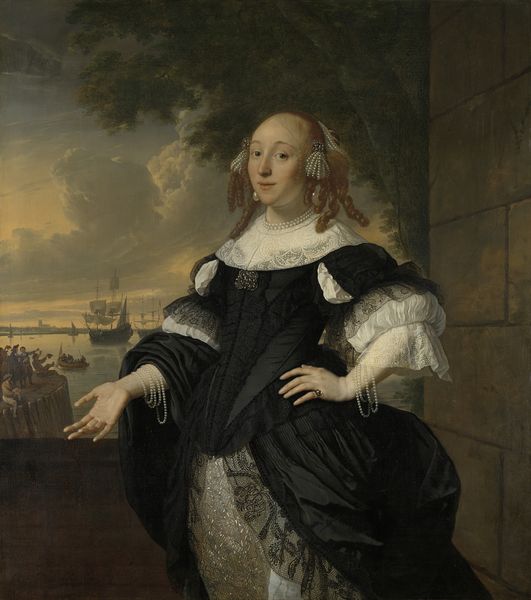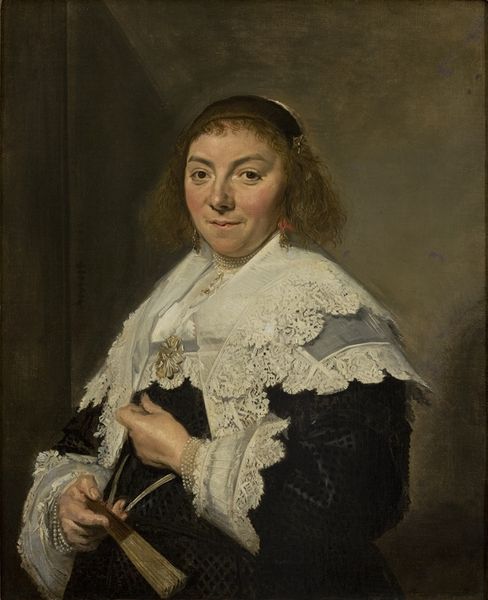
Portrait of Maria van Citters (1684-1752), Wife of Caspar Adriaen Parduyn 1725 - 1753
0:00
0:00
painting, oil-paint
#
portrait
#
baroque
#
dutch-golden-age
#
painting
#
oil-paint
Dimensions: height 55 cm, width 45 cm, depth 6 cm
Copyright: Rijks Museum: Open Domain
Curator: Here we have Philip van Dijk's oil on canvas, "Portrait of Maria van Citters, Wife of Caspar Adriaen Parduyn", dating from the period of 1725 to 1753. Editor: My immediate impression is one of stillness, almost a profound quietude. The subdued palette, dominated by blacks and muted pinks, really reinforces that mood. Curator: The dark clothing, the black veil—are we meant to infer some form of mourning? The accessories are quite restrained, a book on the table, simple earrings... they hint at literacy and piety perhaps? These would have been conventional signifiers of status, of course, but there may be a deeper layer. Editor: It’s a compelling use of contrast, definitely. See how the cool luminosity of her skin draws the eye, positioned against the weight of that velvet robe. The artist really knows how to exploit the textural qualities of oil paint, particularly in the rendering of the fabric. You get a tangible sense of its drape and density. Curator: Yes, texture does matter! And if you think about mourning customs, velvet would have had its own meaning—its dark pile absorbs light, mirroring, in a way, the concealment of grief. This painting feels like a public declaration, framed within private emotion. Her composure, while still, has something intense. Editor: There's something in the asymmetry as well. Look at how the backdrop falls unevenly, drapery bunched to the left but absent to the right where there's simply the cold column. The composition steers away from complete formalism, that really helps communicate her… individuality. Curator: Indeed. In this sense, it breaks the chains of that era to whisper the name of Maria to eternity through both her composure, dark clothing and the setting in the house where she lived, to echo into the void with her tale of woman. Editor: Very interesting; seeing those semiotic links has opened up another perspective for me. I am particularly drawn to that contrast that defines that subtle mood.
Comments
No comments
Be the first to comment and join the conversation on the ultimate creative platform.
